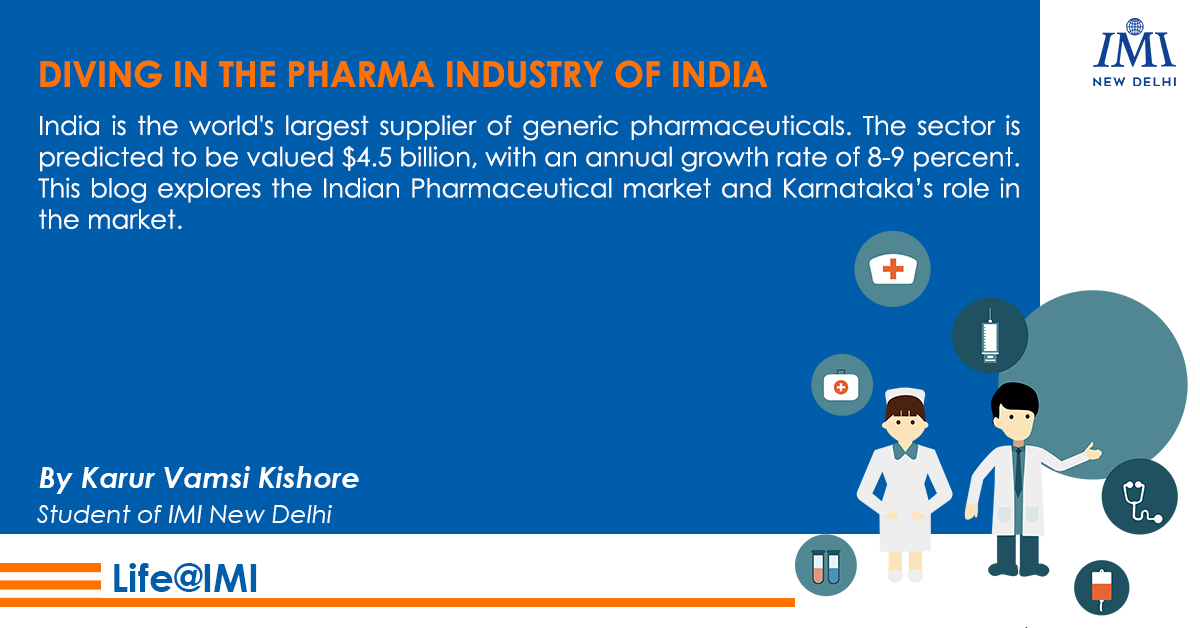The Indian pharmaceuticals market is the third biggest in terms of volume and the fourteenth-largest in terms of value. India is the world’s largest supplier of generic pharmaceuticals, with Indian generics accounting for 20% of worldwide exports by volume. Because the Indian pharmaceutical business is highly fragmented, consolidation has recently become a prominent feature.
In the global medicines industry, India holds a significant place. In addition, the country boasts a big pool of scientists and engineers that have the capacity to propel the sector forward to new heights. Indian pharmaceutical companies now supply over 80% of the antiretroviral medications needed worldwide to address AIDS (Acquired Immuno Deficiency Syndrome).
From physical qualities and marketing point of view, the Indian pharmaceutical sector is classified into two categories: bulk pharmaceuticals and formulations, and line of treatment, which is further separated into Allopathic, Ayurveda, Homeopathy, and Unani, and so on.
Today, India’s pharmaceutical industry is the most advanced of the country’s science-based businesses, with a broad variety of competencies in the difficult field of drug manufacturing and technology. The sector is predicted to be valued $4.5 billion, with an annual growth rate of 8-9 percent. It is one of the most well-organized industries. In terms of technology, quality, and the range of medicines produced, this industry excels. Simple headache tablets to sophisticated antibiotics and complicated cardiac chemicals are among the industry’s products.
By expanding quality manufacturers and numerous units permitted by regulatory agencies in the United States and the United Kingdom, the pharmaceutical industry fosters long-term growth in the crucial field of medicine. International enterprises linked with these industries have fostered, aided, and driven India’s rapid development during the last 53 years, helping to put India on the global pharmaceutical map.
Export Market
Indian pharmaceutical exports increased by 8.4% year on year to US$20.7 billion in FY20 (exports were US$19.1 billion in 2019). Between 2015 and 2020, they grew at a CAGR of 6.2 percent. Exports of generic pharmaceuticals to more than 200 nations were a major contributor (including both developed and developing markets). India is home to 60,000 generic products across 60 therapeutic areas. The country accounts for 40% of generics demand in the United States and 25% of all medications in the United Kingdom. India also supplies around 80% of the world’s need for antiretroviral medications for the Acquired Immune Deficiency Syndrome (AIDS), helping to make AIDS therapies more accessible.
Domestic Market
The domestic pharmaceutical market in India has grown by 9.8% year on year to US$20.3 billion in 2019 (from US$18.12 billion in 2018). The anti-infective category is the most popular, accounting for 14% of the overall domestic pharmaceutical industry and continuing to rise in double digits. Diabetes, cardiovascular disease, and respiratory disease are among the other areas that are rising by double digits. Despite a difficult start to the year owing to the epidemic, the domestic market grew by 2.2 percent from April to September 2020 compared to the same period the previous year.
Pharmaceutical Market in Karnataka
Karnataka is one of India’s fastest-growing pharmaceutical industries, with nearly 40% of the state’s pharmaceutical output exported. The state, notably Bangalore, is growing as a pharma powerhouse, with biologics manufacturing driving most of its growth.
The state contributes about 10% to the pharmaceutical export revenues of the country. At present Karnataka is home to more than 230 pharma and biotech companies.
The pharmaceutical sector in Karnataka is steadily growing and expanding due to a variety of causes, including:
● The state is home to a considerable number of well-known and internationally recognized pharmaceutical enterprises.
● Within the state, there are various sophisticated Research and Development (R&D) Centers, special pharmaceutical SEZs, and pharma industrial zones.
● Natural resources and skilled labor are both readily available.
● Technology and infrastructure on par with the best in the world
● A thriving environment for start-ups and innovation
● The state government’s supportive policies
Karnataka is one of the top ten states in the country with the most pharmaceutical production facilities. There are 221 formulation units and 74 bulk medication units in the state. They make up 3% of India’s pharmaceutical manufacturing plants.
The ecosystem has played a vital role in putting Karnataka on the global pharmaceutical map.
• The presence of SMEs, government firms, huge Indian organisations, and multinational corporations (MNCs) has resulted in a well-developed value chain.
• The existence of 60 pharmacy institutions in the state has resulted in a highly educated, well-trained, and competent workforce.
• A well-developed research infrastructure, with 50 CROs on hand to aid the sector with clinical trials and research.
• A large number of medical and dental universities (over 70) are collaborating on product development and testing, forming an ecosystem.
• Karnataka is strategically located in the core of Southern India’s industrial and logistical sector, making it a suitable site for manufacturing.
Karnataka’s pharmaceutical production skills have received international prominence. Several sophisticated pharma factories in the state meet worldwide standards and have received international regulatory approvals.
The state is well-known for producing high-quality pharmaceuticals. It’s also a good place to go for low-cost generics. In addition, the state’s pharmaceutical manufacturing units have a low-average production cost.


Speak your mind